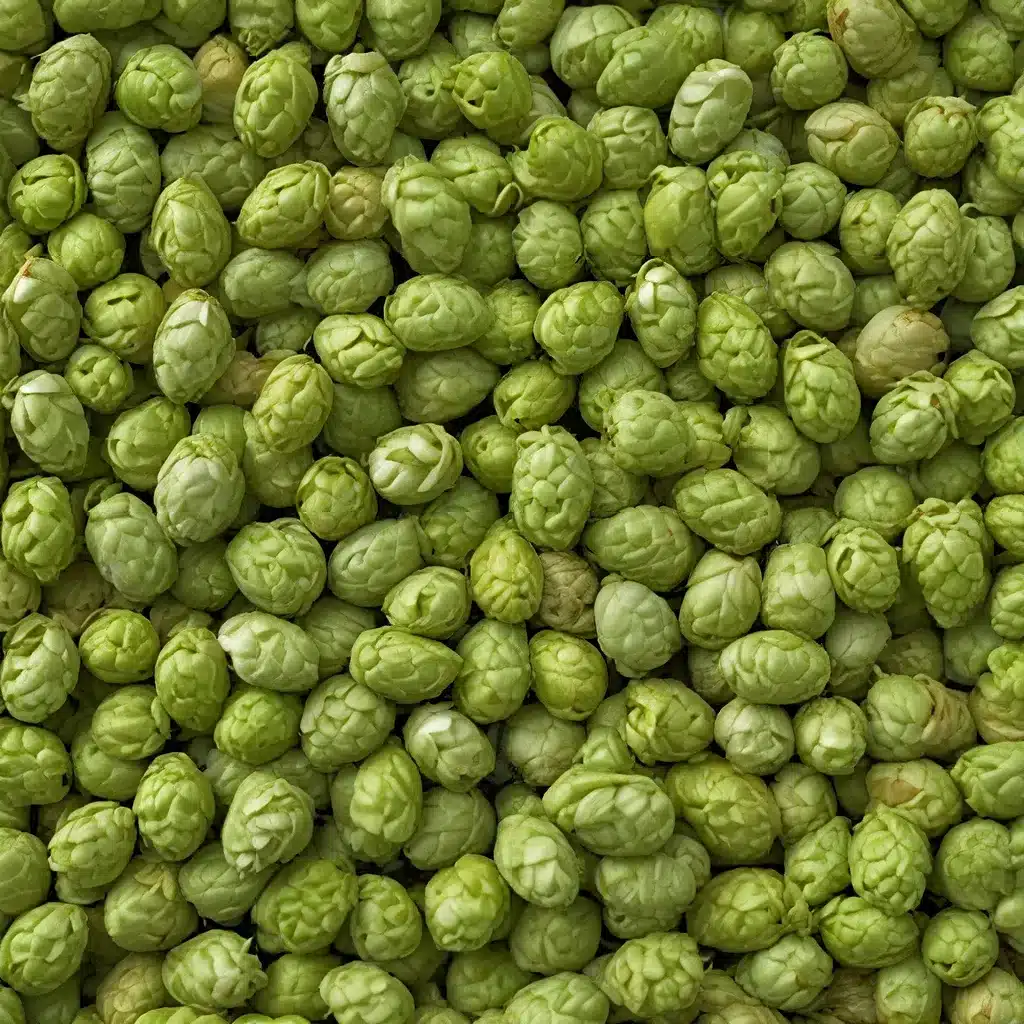
Ah, the age-old question that has puzzled brewmasters and hopheads alike: does the choice of hop variety really make a difference in the final flavor profile of a beer? Well, my fellow beer enthusiasts, buckle up, because we’re about to embark on a delicious journey through the harmonious world of hop blending.
Unlocking the Secrets of Hop Diversity
As a self-proclaimed beer aficionado, I’ve had my fair share of experiences with the vast array of hop varieties out there. From the citrusy, floral notes of Cascade to the earthy, spicy characteristics of East Kent Golding, each hop brings its own unique personality to the party. But the real magic happens when you start combining these hop superstars to create truly complex and captivating flavors.
According to the homebrewing enthusiasts on Reddit, the choice of bittering hop variety can indeed make a noticeable difference in the final taste, even in beers that aren’t particularly hoppy. As one brewer eloquently put it, “Beyond the alpha acid count, using one hop variety over another at the beginning of a boil can actually affect the taste.”
Harmonizing Hoppiness
So, what’s the secret to unlocking these hop harmonies? It’s all about finding the perfect balance and synergy between different hop varieties. Think of it like building a band – each instrument (or hop) has its own unique sound, but when they’re all playing together in perfect harmony, the result is a truly transcendent experience.
Let’s take a closer look at some of the hop superstars that can help you create your own hop-fueled symphony. The classic Cascade hop, with its citrusy, floral notes, can provide a wonderful backbone for your brew, while the earthy, spicy East Kent Golding can add a touch of complexity and depth. And don’t forget about the bold, tropical fruit flavors of the newcomer, Citra – this hop can be the perfect counterpoint to the more traditional Cascade or Golding.
Blending for Balance and Complexity
But the real magic happens when you start experimenting with blending these hop varieties together. Imagine a Pale Ale that starts with a strong Cascade foundation, then layers in the earthy, spicy notes of East Kent Golding and the juicy, tropical punch of Citra. Or how about a hoppy IPA that combines the piney, resinous qualities of Simcoe with the bright, citrusy flavors of Amarillo and the floral, herbal notes of Willamette?
The possibilities are endless, and the key is to find the right balance and harmony between the different hop profiles. It’s like a culinary dance, where each ingredient (or hop) has its own role to play, but when they’re all working together in perfect sync, the result is a flavor explosion that leaves your taste buds singing.
Mastering the Art of Hop Blending
Of course, perfecting the art of hop blending is no easy feat. It takes time, patience, and a whole lot of trial and error. But that’s half the fun, isn’t it? As you experiment with different hop combinations, you’ll start to uncover the nuances and subtleties that can make your beers truly unique and unforgettable.
Timing is Everything
One of the most crucial factors in hop blending is timing. When you add each hop variety during the brewing process can have a significant impact on the final flavor profile. Generally speaking, hops added at the beginning of the boil will contribute more bitterness and less aroma, while hops added later in the boil or during dry-hopping will lend more aromatic and flavor-focused characteristics.
So, as you’re crafting your hop harmony, be mindful of when you’re adding each variety. Perhaps you’ll want to use a combination of early-boil bittering hops and late-addition aroma hops to create a well-rounded, balanced beer. Or maybe you’ll experiment with dry-hopping a blend of hops to really amplify the fruity, floral notes.
Cultivar Considerations
But the fun doesn’t stop there. As the folks at Saint Arnold Brewing Company know, the specific hop cultivars you choose can also have a significant impact on the final flavor profile. For example, their Art Car IPA features a blend of both new and old-school hop varieties from the Pacific Northwest, resulting in a complex aroma that blends apricot, tropical fruit, and mango.
So, as you’re exploring the world of hop blending, be sure to keep an open mind and experiment with a diverse range of hop cultivars. You never know what unexpected flavor harmonies you might uncover!
Putting it All Together
Alright, now that we’ve delved into the intricacies of hop blending, it’s time to put it all together. Imagine a beer that starts with a solid foundation of classic Cascade hops, providing that quintessential citrusy, floral backbone. Then, we layer in the earthy, spicy notes of East Kent Golding and the juicy, tropical punch of Citra, creating a harmonious dance of flavors that has your taste buds doing a joyful jig.
But we’re not done yet! To really amp up the complexity, let’s add a touch of Simcoe for its piney, resinous qualities, and a hint of Amarillo for its bright, citrusy notes. The result? A hop-forward masterpiece that’s bursting with layers of flavor, each one complementing and enhancing the others in a symphony of deliciousness.
As you sip this creation, you’ll be transported to a world where hops are the stars of the show, each one playing its part in creating a harmonious and unforgettable brew. And who knows, maybe you’ll even be inspired to start your own hop-fueled band – the possibilities are endless!
So, the next time you find yourself in the cozy confines of The Up & Under Pub, be sure to ask the bartender about their latest hop-blended creations. After all, the world of beer is a vast and wondrous place, and there’s always a new harmony waiting to be discovered.

